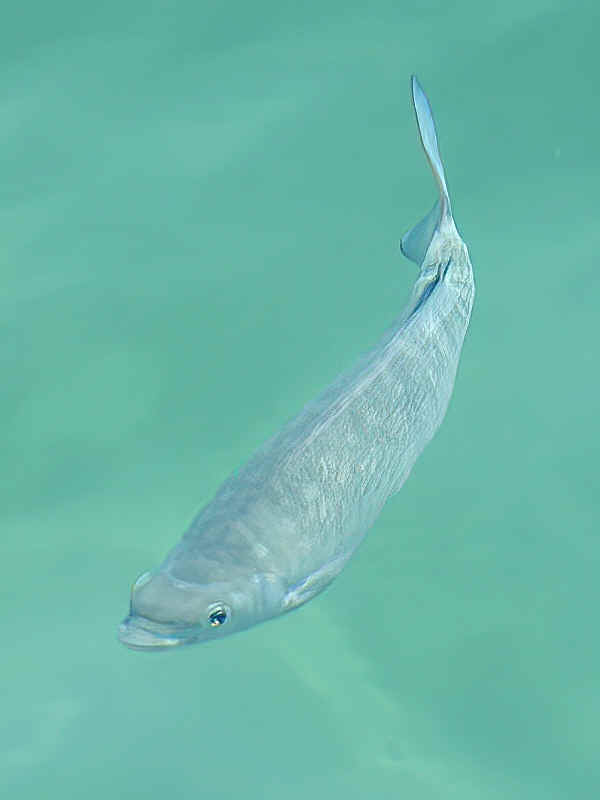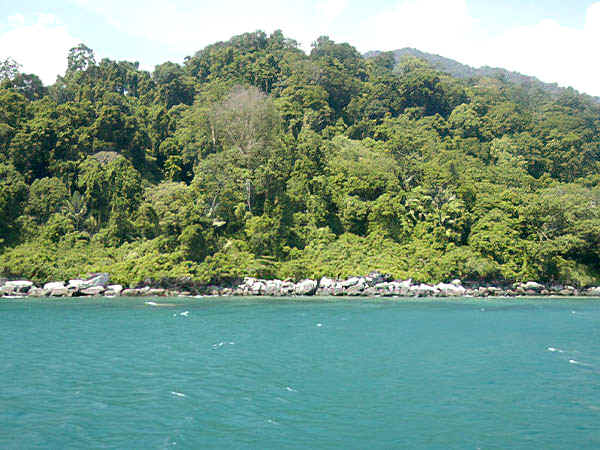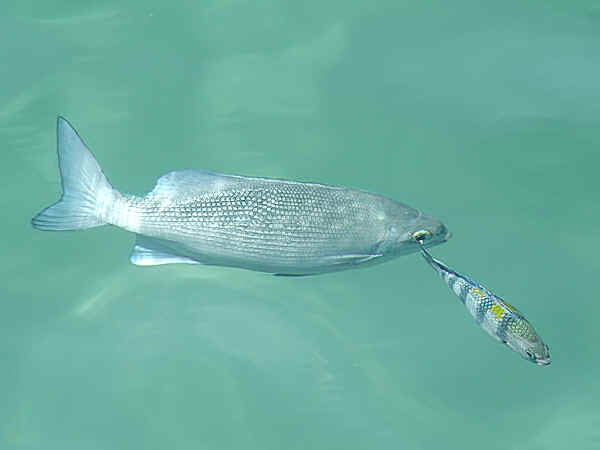
Fig 1

Fig 2

Fig 3
|
Order : Perciformes
Family : KYPHOSIDAE
Species : As of 2024, 16 species in 2 genera (Kyphosus and Neoscorpis)
Maximum Length : 90 cm in Kyphosus incisor
Sea chubs (Kyphosus spp. and Neoscorpis lithophilus) comprise a group of
16 species in the family Kyphosidae (Fishbase, 2024).
These near-shore marine and brackish water fishes are widely distributed in the Pacific, Indian and Atlantic oceans,
as well as the warm, tropical waters of
Southeast Asia; at least 4 species occur within coastal Southeast Asia seas.
The largest member of the family is Kyphosus incisor (Yellow Sea
Chub) which grows up to 90 cm total length, however most other species reach maximum
sizes of around 40 to 80 cm. Most are strictly herbivorous, feeding on marine algae (seaweed).
Kyphosus cinerascens, (Blue Sea Chub, Topsail Sea Chub), featured
here, ranges throughout Southeast Asia. It typically reaches a
maximum length of 45 cm, but may occasionally grow up to 53 cm (Fishbase,
2024). Its colour is typically bluish-grey, sometimes brownish, with dark
lines on the flanks. Its body is laterally compressed, and its tail fin is
emarginate (i.e. slightly forked). It feeds mainly on marine algae
(seaweed), albeit with associated invertebrates.
Fig 1 : Blue Sea-chub (Kyphosus cinerascens) in shallow coastal
water at Tioman Island, Peninsular Malaysia.
Fig 2 : Warm, shallow, tropical marine habitat at Tioman Island, Peninsular
Malaysia, in the South China Sea.
Fig 3 : Dorso-lateral view of Blue Sea-chub. At the bottom right of this
image is an Indo-Pacific Sergeant (Abudefduf
vaigiensis).
Links and references :
Fishbase - Kyphosidae
Fishbase - Kyphosus cinerascens
|